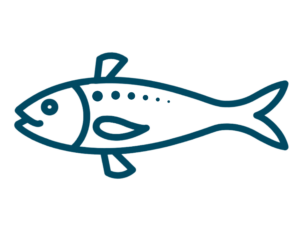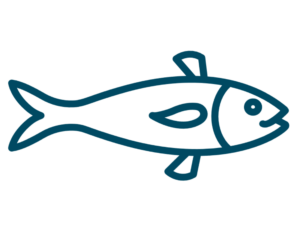A cleaner river — but an ecosystem that still needs our help.
The Connecticut River, an American Heritage River and America’s only National Blueway, is a regional resource that merits the highest level of protection.
Like many other large rivers, much of the Connecticut River was badly polluted in the mid-20th century by industrial and sewage waste as communities along the river flourished. From the mid-19th to the mid-20th century industries dumped increasing amounts of pollutants into the Connecticut River, almost wiping out the shad runs and destroying what remained of the salmon populations.
The resurgence of powerful environmental movements in the 20th century and the passage of strongly enforced environmental laws – such as protections provided by the Clean Water Act of 1972 – has led to dramatic reductions in the dumping of industrial waste. Unfortunately, the river still has significant water quality problems, including, but not limited to, plastic pollution, combined sewer overflows (CSOs), toxic algae blooms, and aquatic invasive species.
Through all these changes, the presence and return of native fish species speaks to the resilience and robustness of the Connecticut River system. While runs today are still a small fraction of their historic, pre 20th century numbers, the river is now recovering and can once again support an increase in the population of native fish.






How far do migratory fish travel?
-
Alewife
-
American shad
-
Blueback herring
-
Sea lamprey
-
Shortnose sturgeon
Which fish migrate?
All fish are mobile throughout their watery homes, but some more so than others. Migratory fish travel between freshwater and saltwater throughout their lifecycle to reach the habitat that best suits their needs for spawning, feeding, and finding shelter.
No species on the Connecticut River make longer journeys than the suite of migratory fish moving upriver from the Atlantic Ocean: blueback herring, alewives, American shad, American eels, Atlantic salmon and sea lampreys. These migrations have been taking place for thousands of years. The journeys of these species may take them through thousands of ocean miles annually, and nearly 200 miles upriver.
Anadromous fish
Anadromous fish are born in freshwater, swim to the sea to feed and mature, then return to the rivers of their birth to spawn. Though some members of each species die after spawning, only the sea lamprey spawns as the final act in its long-life cycle. All other species may survive, return to the ocean, and then return to the river to spawn again.
Catadromous fish
Catadromous fish grow and mature in rivers and estuaries, return to spawn in the ocean, and then die. After years feeding and maturing in rivers and estuaries throughout the watershed, catadromous species such as the American eel, return to the ocean to mate.
Meet the migratory fish
Why is fish migration important?
Migratory fish travel hundreds of miles annually in search of prime habitat to spawn (release eggs). When fish can’t reach their habitat, they can’t reproduce and build their populations. The reduction of native fish populations influences the entire ecosystem. Over thousands of years, the river and marine ecosystems have evolved to depend on the nutrients supplied by the bodies of dead fish after they reproduce. In addition to being important prey for other animals, these fish are often crucial to commercial and recreational fisheries, thus affecting local economies.
Fish Facts
Atlantic Salmon are endangered
In 2021, only 3 Atlantic Salmon were counted in the Connecticut River basin. Atlantic Salmon used to be found in every river North of the Hudson River. However, less than half of 1 percent of the historic population remains.
A vital ecological role
All migratory fish play an important ecological role in the freshwater ecosystems of the Connecticut River. The river has evolved to rely on the nutrients in the bodies of these native migratory fish. Without them, a healthy ecosystem isn’t possible.
Migrating fish face many barriers
The once prolific runs of American shad, blueback herring, alewives and Atlantic salmon have been dramatically reduced over the centuries, due to dams and other threats. Today, runs are a small fraction of their historic numbers.
The barriers in their way
On their miles long journey to spawn, fish are often blocked from traveling through river systems by human engineered barriers, such as dams and culverts. Dams, both those currently in use to generate hydropower, and derelict dams, present a vertical barrier that fish cannot pass over. While many fish can leap short distances up, as is common over rocks and natural dams in streams, they cannot jump high enough to pass these large man-made structures. Without the fish passage facilities that are in place at most main stem dams, they have no way of reaching prime habitat. Changes in dam operations and discharges at main stem sites, as well as failing fish passage facilities, are further impacting surviving fish runs.
Culverts (tunnels that carry streams under roads) are also barriers for migratory fish. When the culverts are too narrow, too steep or are too high above the stream, fish cannot move through them. In the Connecticut River watershed, there are thousands of poorly designed road crossings that block fish from reaching available habitat. Culverts at these locations need to be replaced with fish-friendly structures.
Fish need ladders too
A fish ladder, also known as a fishway or fish pass, is a structure around or on river barriers that facilitate movement of fish from the base of the barrier to the waters on the other side. Most ladders enable fish to pass around the barriers by swimming, or leaping, up a series of relatively low steps. The velocity of the water moving through these steps and pools is controlled so that it is enough to attract the fish to the ladder, but low enough that it does not wash fish back downstream.
Examples of fish ladders that use the stepped pool system can be found at Vernon and Turners Falls Dam. Another type of fish passage is a fish elevator, such as the one at Holyoke Dam, which is suited to tall barriers. With a fish elevator, fish swim into a collection area at the base of the barrier. When enough fish enter the collection area, they are moved into a hopper that carries them to a flume that empties above the dam. At the Holyoke Dam, two elevators lift 500 fish at a time up the 52-foot dam.
Fish ladders and elevators vary in effectiveness for different types of species. Effectiveness depends on the species swimming ability, consistent waterflow, and design/location of the fish ladder. Along the Connecticut River, roughly 10% of migratory fish that reach the Turners Falls Dam are able to pass it. The Vernon Dam has a passage efficiency of roughly 60%. The Connecticut River Atlantic Salmon Commission has a policy that requires that 75% of fish pass within 24 hours of approaching a dam moving upstream, and 90% pass within 24 hours moving downstream. The fish ladders on the Connecticut River are underperforming.



How can we reconnect habitat for migratory fish?
Critical fish passage and dam-removal work is taking place on the main stem of the Connecticut River and its tributaries. This work is completed by many state, federal, tribal, nonprofit and community partners working together to protect and restore river habit. These programs and partnerships remove the deadbeat dams, build fish ladders at active hydro dams and replace culverts with larger flood and fish friendly structures. Creating fish and aquatic animal passage helps reestablish natural cycles in rivers, allowing migratory fish, mussels, amphibians, turtles and a host of aquatic invertebrates access to critical habitat to reproduce.
Removing dams and replacing culverts
When there is support for removal and where barriers are no longer serving their purpose, the best option is to completely remove barriers and open rivers and streams for fish. By removing the barrier in its entirety, the river can be returned to a natural state.
Building fish ladders
When barriers can’t be removed – when a dam is still in use for hydropower or is a historic structure—the best solution is to create fish passage structures that enable them to move past barriers. Each barrier requires a different set of conservation actions and must be tailored to the specific dam as well as the critters moving through the system.
Planting trees
One of the most effective river restoration project is planting trees. Tree canopies shade the water and keep it cool and provide inputs for the aquatic food chain. Fish eat insects that feed on leaves that fall into the water. When a dead tree falls into the water, it can provide shelter for fish from predators. Tree roots stabilize soil along the riverbank and prevent erosion.
















